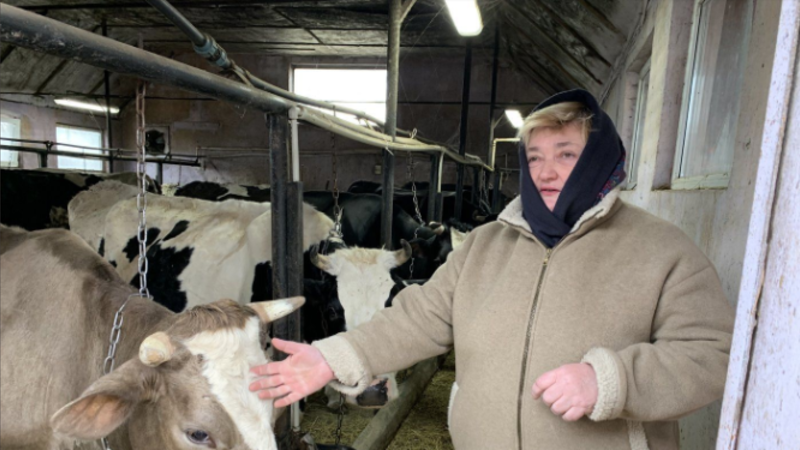
Canadian dairy plant becomes unlikely symbol of defiance for Ukrainian farmers
The cows on Lyuba Pastushok’s farm are like her “cheeky children,” she explained in Ukrainian as she walked among her growing herd, gently cooing to them and softly petting their heads.
A few years ago there were only five cows on her small family operation in Holoskovychi, a rural community an hour and a half east of the nearest city of Lviv, in western Ukraine.
Now she tends to 25 cows, six of which she bought after Russian forces invaded the country.
Wrapped up against the cold with a kerchief tied over her head, the Ukrainian matriarch pointed out each by name, her voice full of motherly pride.


